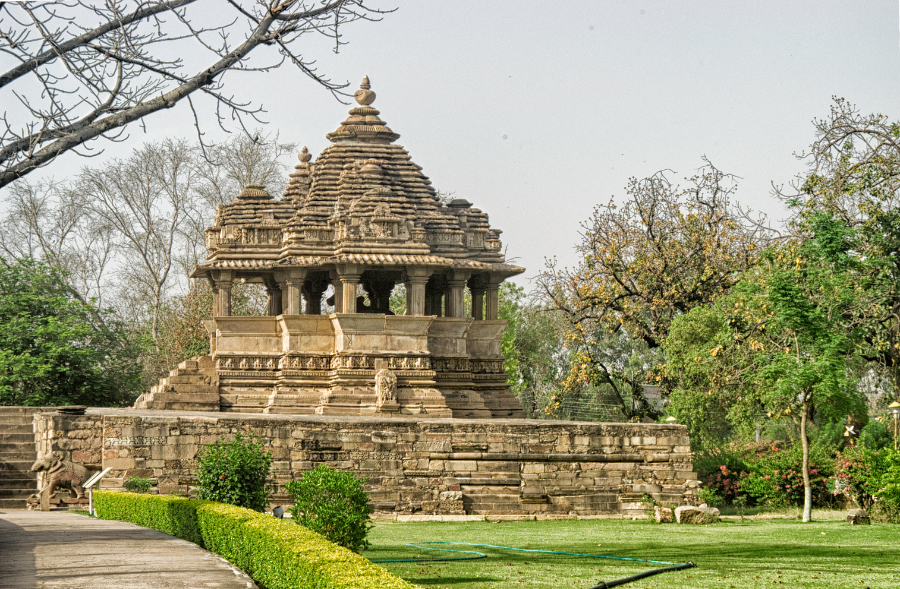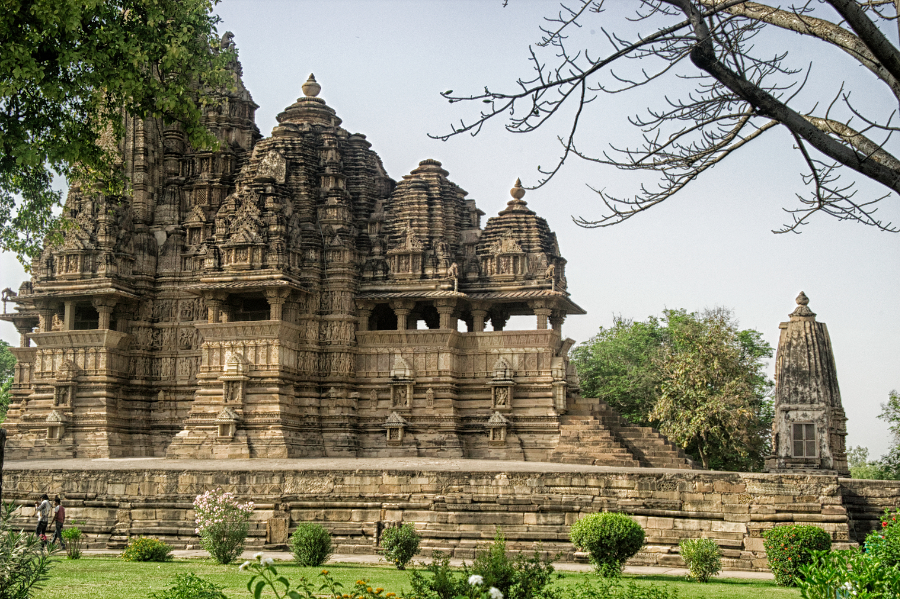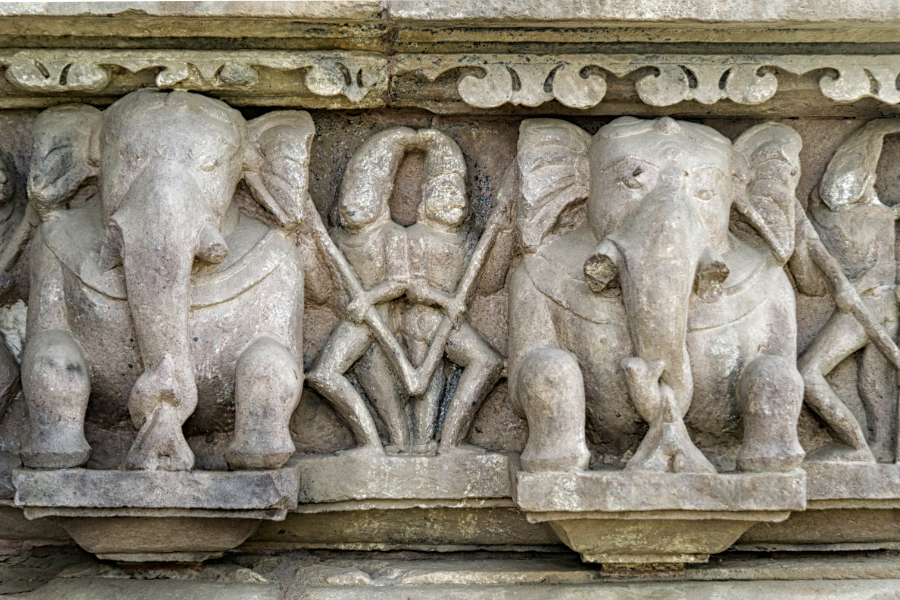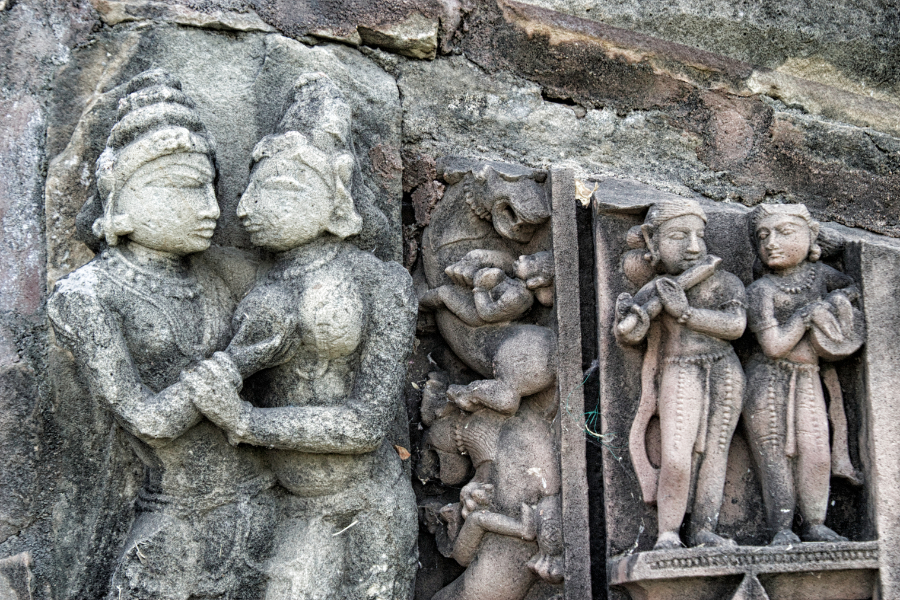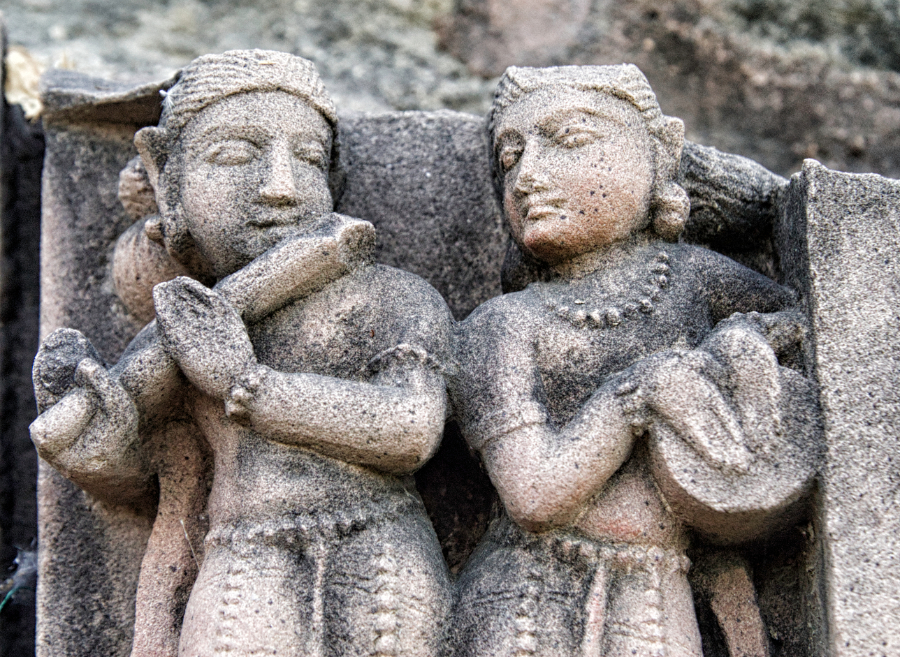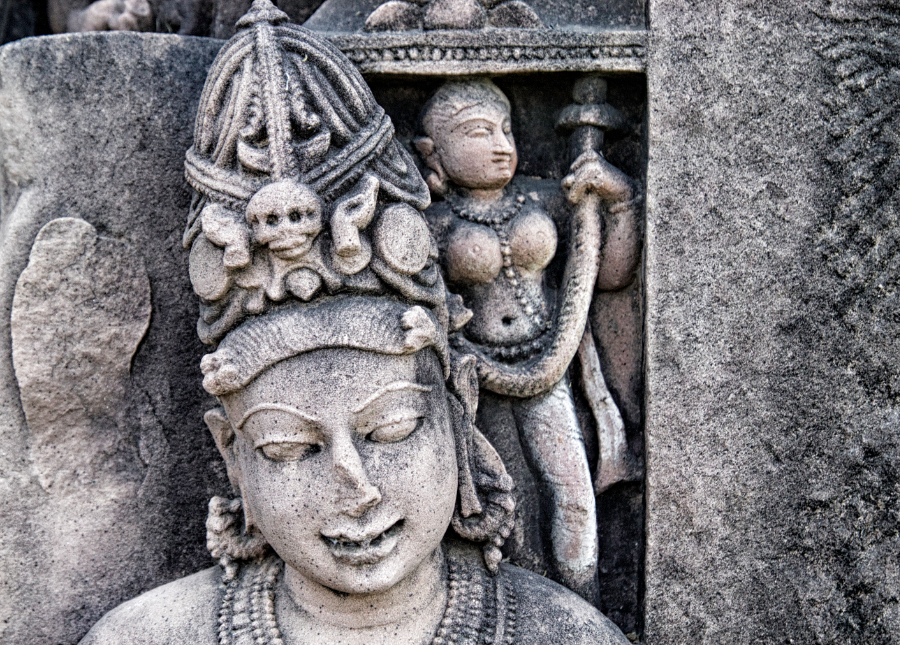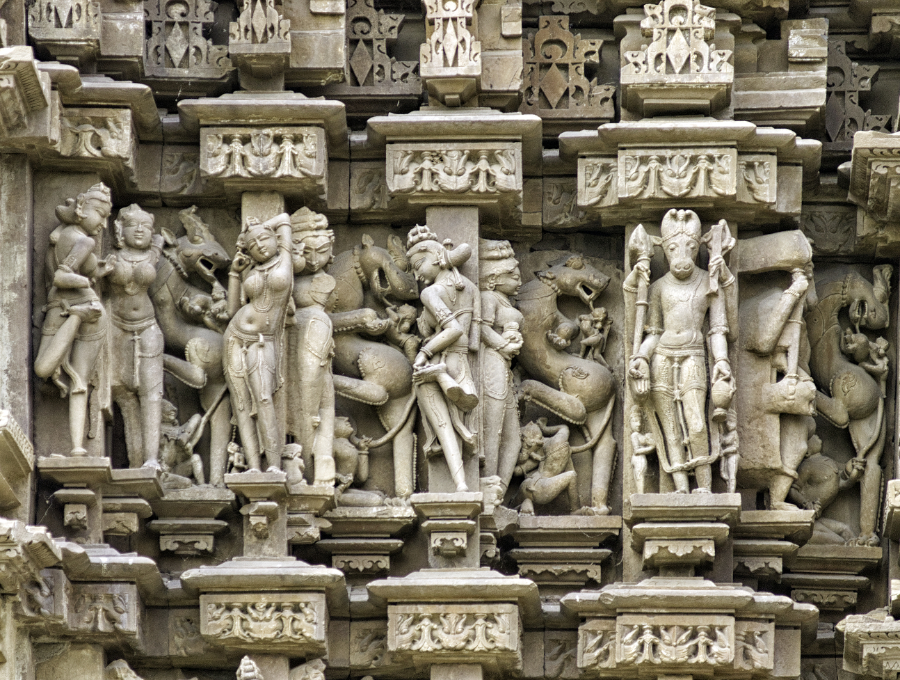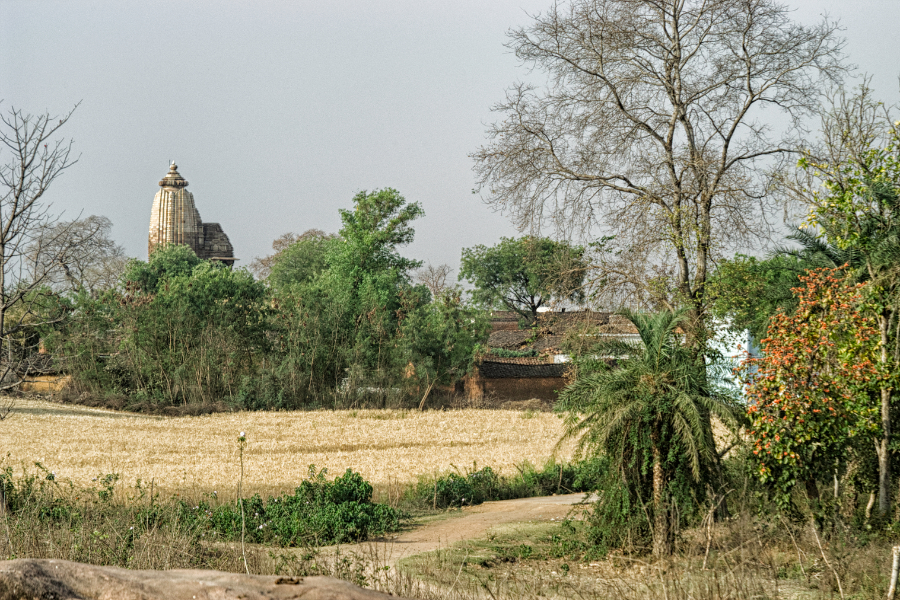It was one summer afternoon that I found myself arriving at Khajuraho. To say my view out of the plane window was less than inspiring would be putting it mildly. The landscape was almost barren and there seemed to be little signs of life in any form. I began to wonder if this trip was a mistake. Coming out of the small airport I was greeted by some horse drawn carts whose owners offered me a ride into town. Spotting a lone taxi, a deal was struck for three days of local transportation.
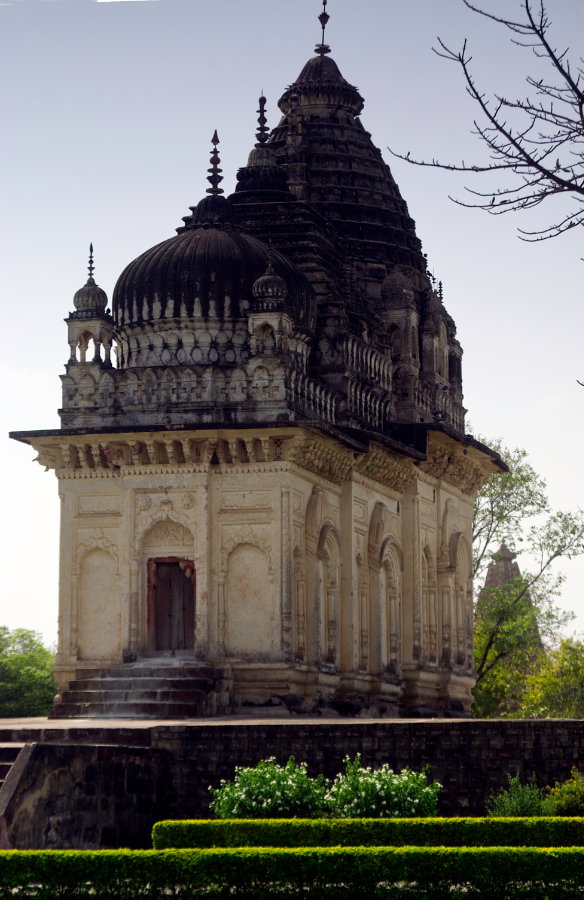
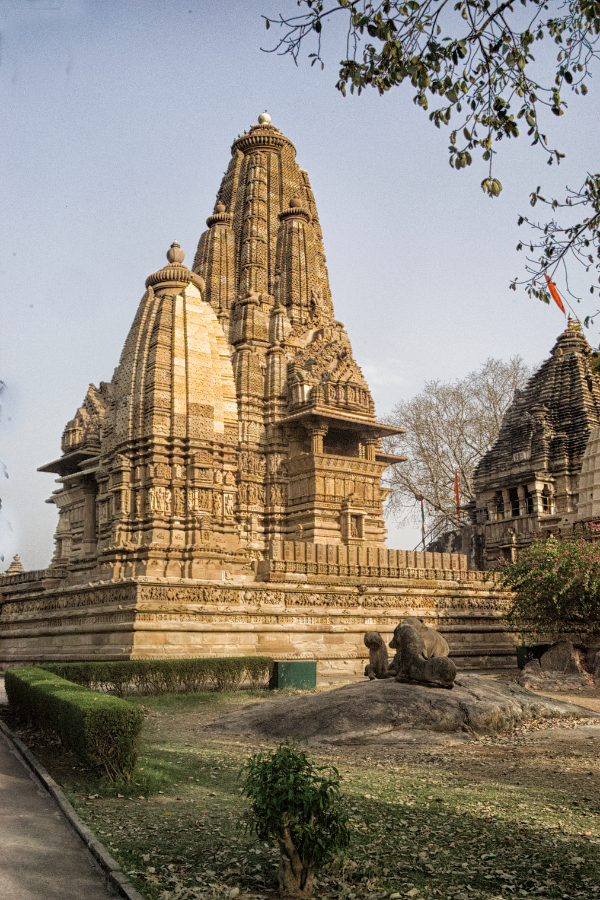
Khajuraho is group of Jain and Hindu temples in Chhatarpur district, in the state of Madhya Pradesh in central India. It’s about 175 km from Jhansi and a UNESCO World Heritage site. The temples were built between 885 and 1050 AD during the Chandela dynasty. They built 85 temples spread over 20 square km of which only 25 survive. Most were built in the reign of kings Yashovarman and Dhanga. They are grouped into the Eastern, Western and Southern temples.
The most famous surviving temple is Kandariya Mahadeva built by King Vidyadhara. In the13th century they were raided by the army of the Delhi Sultanate who destroyed several temples and muslim dynasties took over from the 13th to the 18th century. After this the temples were left in neglect and the trees and bushes overgrew the temples and they disappeared from sight until rediscovered in 1830 by a British surveyor T.S. Burt. The surviving temples are dedicated to Vishnu, Shiva, Ganesha and the Sun god. The temples are made of sandstone with a granite base and have beautifully carved statues and panels on the spires and side walls. Erotic carvings are only a small part of the sculptures on the walls.
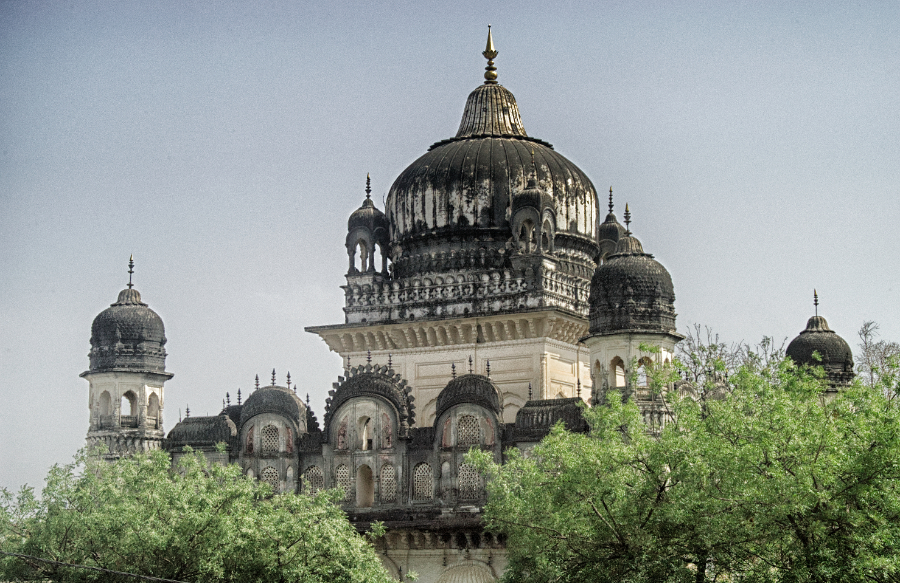
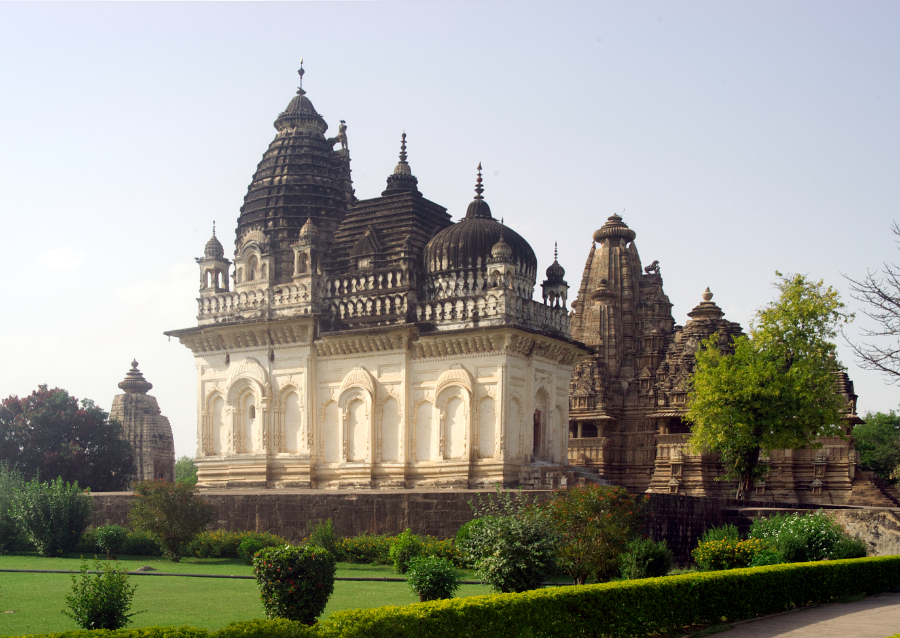
Photographing these temples is straight forward. A somewhat cloudy day being ideal to lower contrast. Tripods are prohibited unless you have permission from the Archaeological Survey of India who manages such sites. A wide angle 10~24mm and 18~55mm on APC sensor cameras will be adequate. The Temples are open from 6 am so you can benefit from the early morning light. Best time to visit being the cooler months of October to March.
